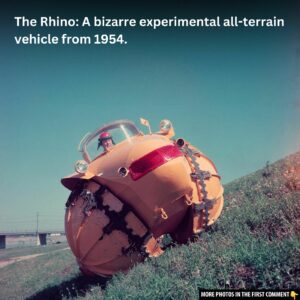The Amphicar Model 770 is an extraordinary example of engineering innovation that has captivated car enthusiasts for decades. With its unique ability to drive on both land and water, the Amphicar was ahead of its time, a true marvel in automotive and aquatic design. Produced between 1961 and 1968, the Amphicar was designed by Hans Trippel and manufactured by the Quandt Group in Germany. A total of only 3,878 units were built, and today, the Amphicar remains a highly sought-after collector’s item, attracting attention wherever it goes. This article will take a deep dive into the design, performance, legacy, and lasting appeal of the Amphicar Model 770.
Design and Engineering
The Amphicar Model 770 was designed to be an amphibious vehicle, meaning it was built to function on both land and water. Its design was an ambitious blend of automotive engineering and nautical technology. At its core, the Amphicar was a compact, rear-engine vehicle powered by a 43-horsepower, four-cylinder Triumph Herald motor. The car’s design was simple yet effective, with a sturdy body made from steel and a rear-mounted engine, which provided power to both the wheels and the propellers when the car transitioned to water.

One of the most fascinating features of the Amphicar 770 was its seamless transition from land to water. When the car reached a boat ramp, the driver would lock the watertight seals on the doors, secure the front luggage lid, and drive the car slowly into the water. Once afloat, the car’s rear propellers would be engaged via a lever that redirected the engine’s power, while the front wheels served as rudders to steer the vehicle in the water. This system allowed the Amphicar to cruise at speeds of up to 7mph on water, while still reaching a top speed of 70mph on land.

The combination of these two driving systems made the Amphicar an instant sensation, allowing its owners to navigate both highways and lakes with ease, all while garnering the attention and admiration of onlookers.
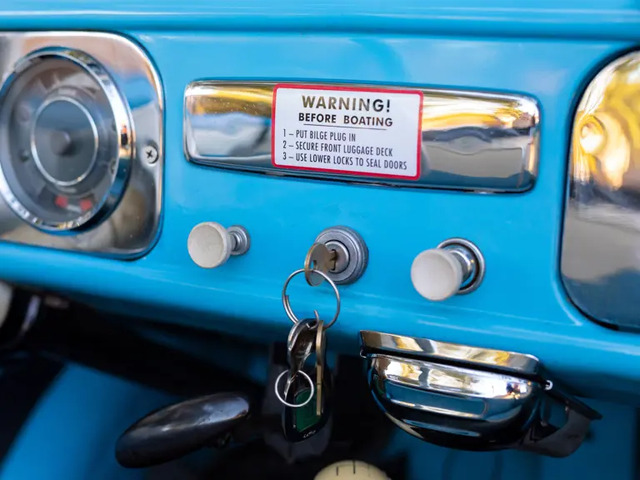
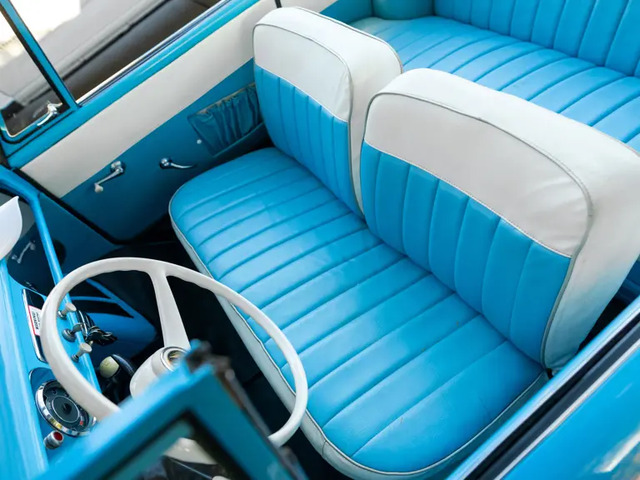
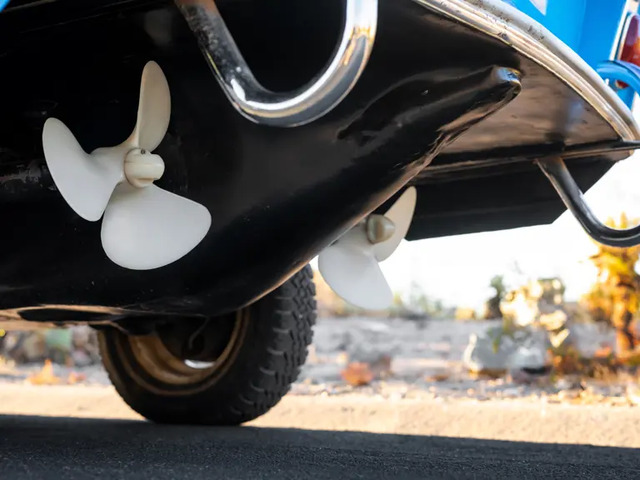
Video
Watch this video from Pawn Stars to see the 1964 Amphicar 770 featured on History!
The Amphicar 770 on Land and Water
Driving the Amphicar on land was much like any other small European automobile of the day. The car was compact, efficient, and easy to handle, making it ideal for urban environments and tight spaces. However, its true charm lay in its amphibious capabilities. When entering the water, the Amphicar transformed into a vessel capable of traversing lakes, rivers, and even coastal waters with relative ease.

While on water, the Amphicar reached a maximum speed of 7mph, allowing for leisurely cruises across calm bodies of water. The propeller-driven system gave the vehicle the ability to glide smoothly across the water, while the front wheels steered the vehicle much like a boat’s rudder. This innovative system made the Amphicar not just a car but a genuine watercraft, capable of navigating aquatic environments without the need for a trailer or launch equipment.
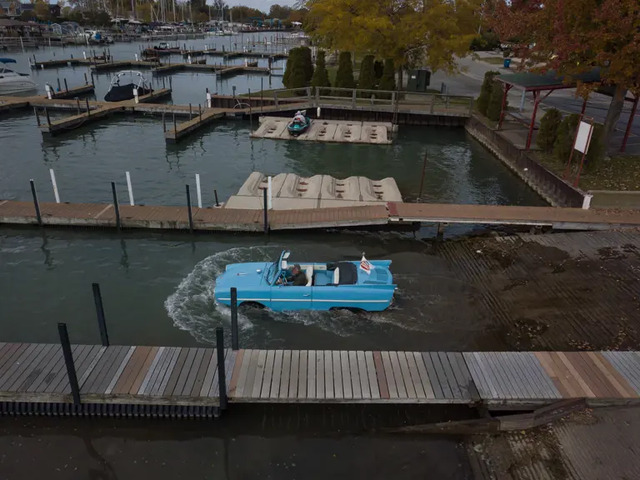
Putting the car into reverse while in the water caused the propellers to spin backward, allowing the driver to maneuver the vehicle with ease. This reverse feature functioned similarly to the brakes on conventional boats, adding an extra layer of control for the driver.
The Production and Legacy of the Amphicar 770
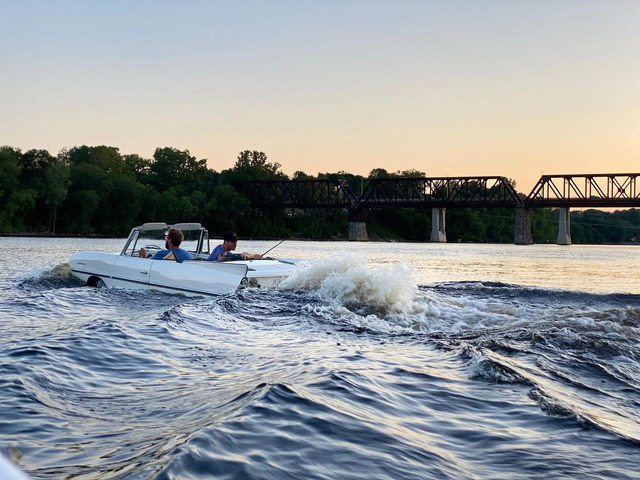
From 1961 to 1968, the Amphicar 770 was produced in small numbers. The original plan for the vehicle was ambitious, but due to its unique design and the challenges of meeting the regulatory standards of different countries, the Amphicar’s production was relatively limited. In the United States, 3,046 units were imported between 1961 and 1967, with a halt to further imports due to U.S. government regulations in 1968.
The vehicle became a niche product, catering to adventurous individuals who sought a unique driving experience. Despite its limited production, the Amphicar left a lasting impact on the automotive world and still garners attention as a collector’s item.
Today, the Amphicar 770 is a symbol of innovation, embodying the creativity and boldness of mid-20th-century automotive engineering. Its ability to travel seamlessly across land and water was, and remains, an awe-inspiring feat, cementing the Amphicar’s legacy as a one-of-a-kind vehicle in the history of both automobiles and watercraft.
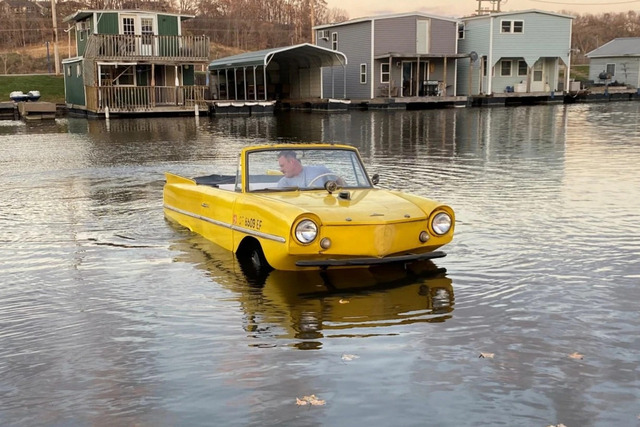
The Amphicar in Today’s Market
In the modern market, the Amphicar 770 has become a highly sought-after collector’s item. The rare combination of engineering ingenuity, limited production, and striking design has made it a prized possession for enthusiasts worldwide. Amphicars that are in good condition can sell for over $100,000 at auction, with some models achieving even higher prices.
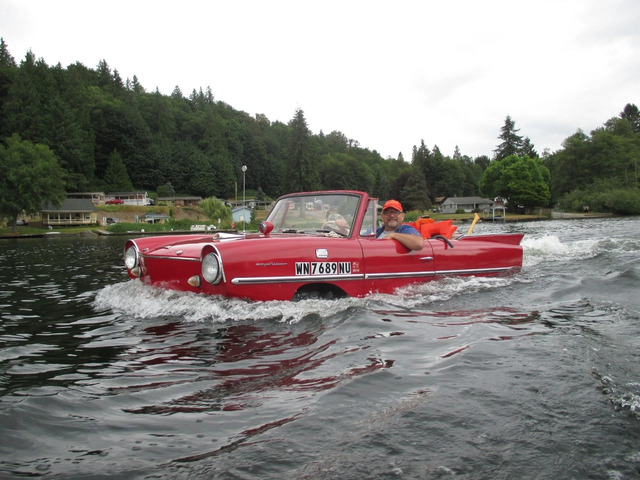
One notable sale was a 1964 Amphicar Model 770, which sold for $143,000 on Bring A Trailer in 2024. This auction result demonstrates the enduring appeal and value of the Amphicar in today’s classic car market. The Amphicar’s unique history, iconic status, and practical capabilities make it a standout addition to any collector’s garage.

The increasing interest in amphibious vehicles has further boosted the Amphicar’s status, and enthusiasts around the world are dedicated to preserving and restoring these fascinating vehicles. The demand for Amphicars at auctions continues to rise, highlighting the car’s continued relevance and allure.
Restorations and Maintenance
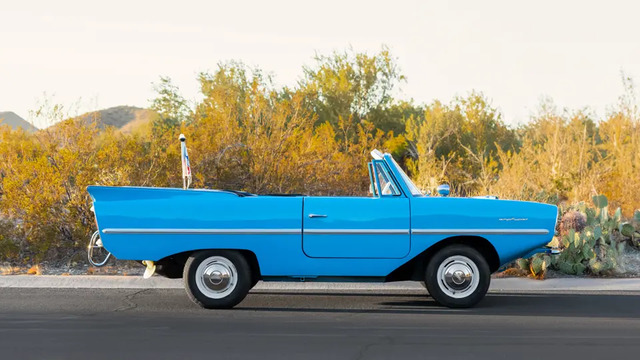
One of the key aspects of owning an Amphicar 770 is the importance of restoration and maintenance. Due to the vehicle’s age, many of the surviving Amphicars have undergone significant restorations to preserve their functionality and appearance. Restoring an Amphicar requires attention to detail, particularly when it comes to the vehicle’s dual functionality. Components like the rear propellers, the watertight seals, and the engine must be carefully maintained to ensure that the car operates effectively both on land and in water.
Fortunately, parts for the Amphicar are readily available through specialized suppliers like Gordon Imports of California. With the right care, these cars can continue to function as they were originally intended, allowing owners to experience the thrill of driving on land and water for years to come.
Cultural Impact and Popularity
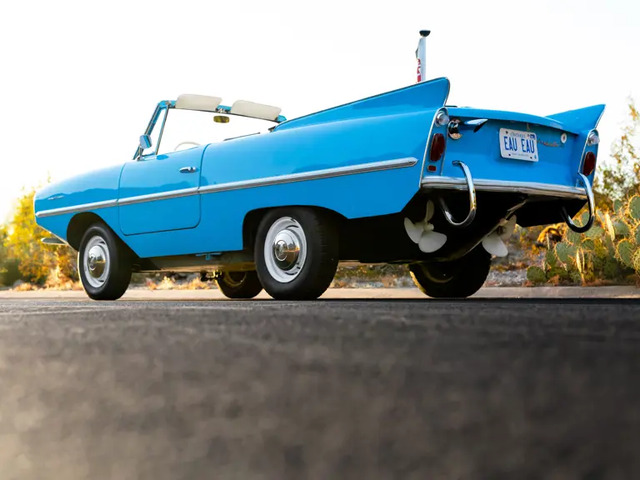
The Amphicar Model 770 holds a special place in automotive and pop culture. Its unique design, combined with the inherent novelty of a car that can swim, has made it a beloved icon in the world of classic cars. The Amphicar has appeared in numerous films, advertisements, and even television shows, further cementing its status as an emblem of innovation.
Today, the Amphicar still stands as a symbol of the daring spirit of its creators and its adventurous owners. Whether cruising down the highway or gliding across a lake, the Amphicar continues to capture the imagination of those who encounter it.
Video
Watch this video to learn about the first mass-produced amphibious car and its groundbreaking design!
Conclusion
The Amphicar Model 770 is more than just a car; it is a testament to the power of innovation and the pursuit of the extraordinary. With its ability to seamlessly transition between land and water, the Amphicar remains one of the most fascinating vehicles ever produced. Its legacy as the first mass-produced amphibious vehicle is secure, and its enduring popularity among collectors proves that the Amphicar will continue to captivate the world for generations to come. The Amphicar Model 770 is, without a doubt, a true marvel of automotive history, combining the best of both land and sea in one unforgettable package.



